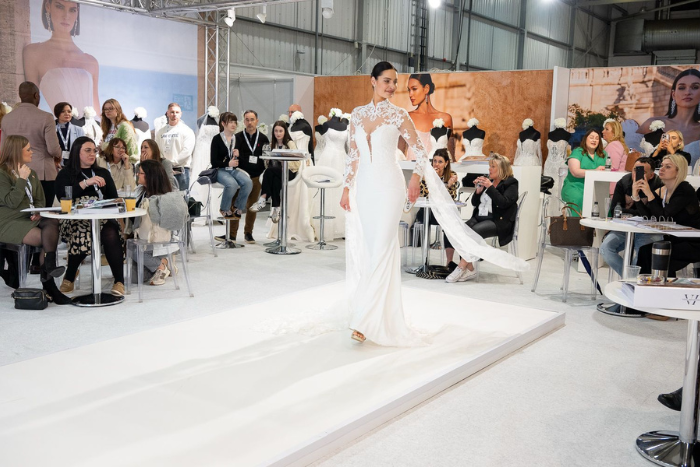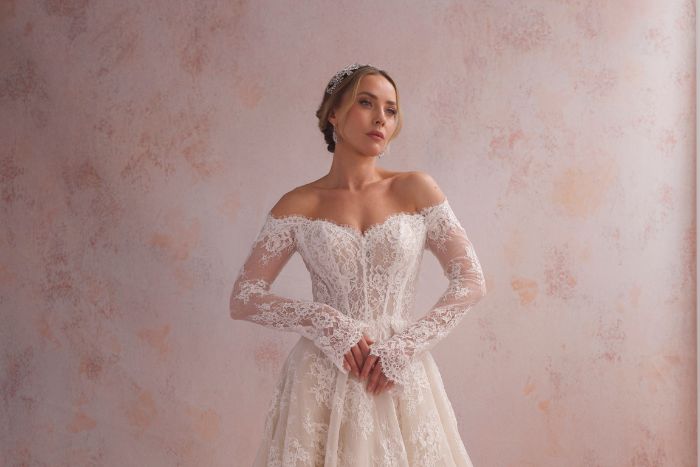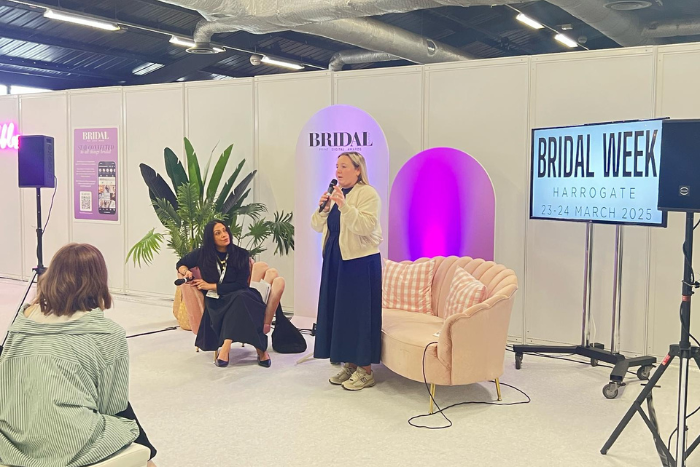Advising Your Brides: The Top Three Frequently Asked Questions
Once a sale is made, amidst the excitement and champagne, boutique owners should advise brides on what comes next. And this is best done at the point-of-sale, rather than point-of-collection.
Managing expectations and the transition into alterations is part of the sale process. To ensure that the chosen gown does not disappoint. Most brides will need something – if only a length adjustment. But some ladies will need more significant fitting work to create their finished vision. How this is achieved will vary across boutiques. If alterations are not offered in-house, you can support your ladies by giving correct and timely information.
Bride FAQ 1: How much will my alterations cost?
Costs will significantly vary depending on:
• The gowns technical construction
• The number of layers and circumference of skirting(s) to be hemmed
• Whether the gown features surface embellishment such as lace, sparkles, beading or appliques
• How much resizing is required across different areas (i.e. number of alterations)
• The location of the establishment. London business overheads will be vastly different to those in Yorkshire for example, and business running costs will, of course, affect the pricing structure.
There are generally two ways that a business will set their charges.
• A personalised dress costing, based on a fitting and a construction assessment of the gown. With this method, each bride will pay for the time and quantity of work carried out, specifically on their gown. Extensive fitting to multiple areas will therefore cost more than a simple length adjustment.
• Flat-fee packages, based on averages. For example, a bride may be offered unlimited alterations for a flat fee of £X-amount…., possibly over inflated to cover all eventualities. Or there may be a series of packages for different types of gown. For brides that need very little work, a flat-fee could be an overspend. But for ladies that need a lot of resizing work, this is good for their budget control, with the establishment and other paying brides effectively subsidising the cost of any extensive labour beyond the package price.
If you refer brides to an external provider, they should be able to issue costing ranges and averages, specific to their business, to help your brides with budgeting. They should be able to explain which of the above methods they use.
As a general guide:
• Gowns that need alterations to a heavily boned bodice will require internal structural work, which takes time and will, therefore, increase overall costings.
• Hem costs are indicative of circumference size and the number of layers. A small circumference, three-layer piece will cost less to hem (shorten) than a wide ball gown with ten layers.
• Gowns which feature a lot of lace or embellishment in the alteration areas will be more expensive to adjust. The embellishments require preparatory removal, before starting. Followed by their return on completion.
• Gowns with horsehair braid or lace trimming on the hemline will take a long time to hem. If this is properly removed, preserved and returned correctly on completion, without shortcuts, this can be around 10hours for one layer.
• Depending on what work is required and the UK location, prices will range from around £300-£950, though there will always be exceptions outside of this range.
Bride FAQ 2: When should I book my alterations?
This is a question of two halves:
• When should an alterations provider be contacted?
• When should the alterations and fittings occur?
Alterations availability should be reserved at the point of buying a bridal gown. This is because many popular and well-respected couturiers, tailors and seamstresses are in high demand. There are simply not enough of us to go round. Summer season diaries may be fully booked 5-12 months ahead depending on reputation and capacity. And Winter bookings may be fully booked from 3-6 months ahead. Once your bride has chosen her gown, it is important for her to secure a booking with her preferred provider.
When making a reservation, the bride will be able to agree on a suitable timeline to carry out the work. This is when the fittings will begin. Timelines may vary slightly from business to business, and of course, the choice of timeline will be impacted by the proposed arrival date of the eagerly anticipated gown. But as a rule, alterations should not be conducted too early, or across an over-generous time frame as this can result in work being repeated, should the bride change shape nearer to the wedding.
At LeannMarieDesign, we offer two timeline options:
• Our standard timeline (6-12weeks prior to the wedding date): This allows plenty of time to conduct fittings, order any specialist fabric or components and it builds in some contingency time for instances such as illness. But this is close enough to the wedding date, to account for any late body-changes, weight targets, or dress arrival delays.
• Our weight-change timeline (1-6weeks prior to the wedding date): This is a very late timeline and does not allow much contingency time. It is, however, ideal for ladies with special circumstances such as a delayed gown purchase, weight related health and medication concerns, and of course pregnancy and breastfeeding.
The process can usually be carried out across a 3-6 week period from first fitting to completion. This will depend on how many fittings are needed, the bride’s attendance availability and how much work is needed in between fittings.
Bride FAQ 3: What happens at the first appointment?
The first alterations appointment is usually the longest one. This would typically involve:
• An Underwear Assessment: The suitability of the chosen underwear will be assessed. If a bride has struggled to source the right solutions, she may be able to try different options with the alteration’s provider themselves. If this service is available, it may even be booked as a pre-alteration’s appointment, so that specialist sourcing can be completed ahead.
• A Full Fitting Assessment: The gown will be sized and fitted (by pinning and measuring) and a construction assessment will be completed to see how the gown is made and where best to make the adjustments.
• A Length Assessment: The bride must have her final shoe choice present so that the length options, hem types and train options can be assessed. Bustling will also be explained.
• Confirmation of the Process: A confirmation of the timeline, based on the assessed work, and advice on the number of mid-fittings required will be issued. Costings will be discussed but a full estimate may follow a couple of days later, if this cannot be calculated at the appointment.
Written by Leann Marshall
Owner of LeannMarieDesign
Writer of the Blog, ‘All Gown & No Knickers’










